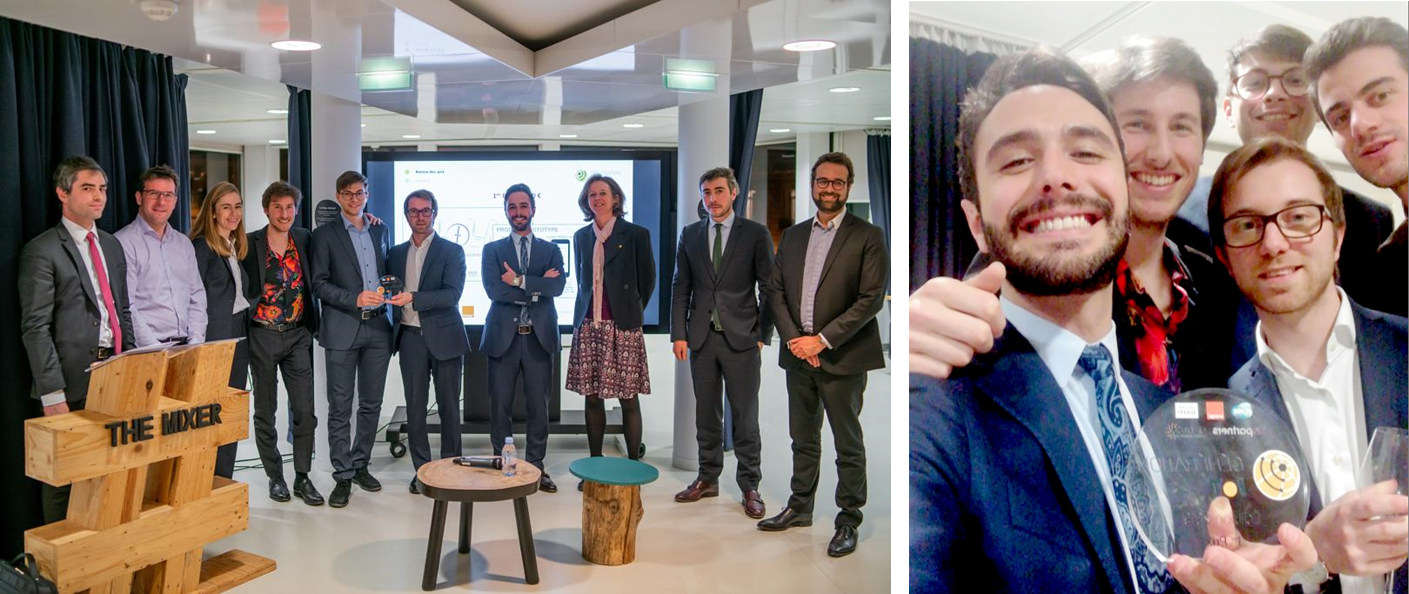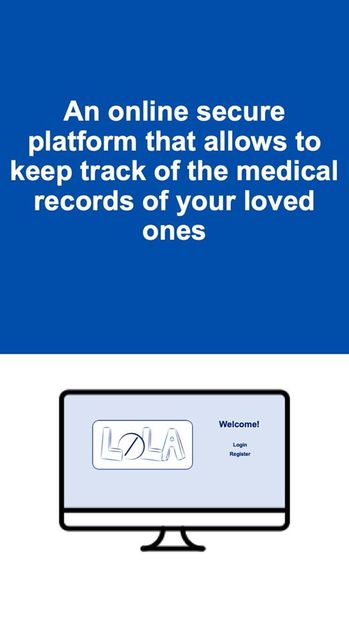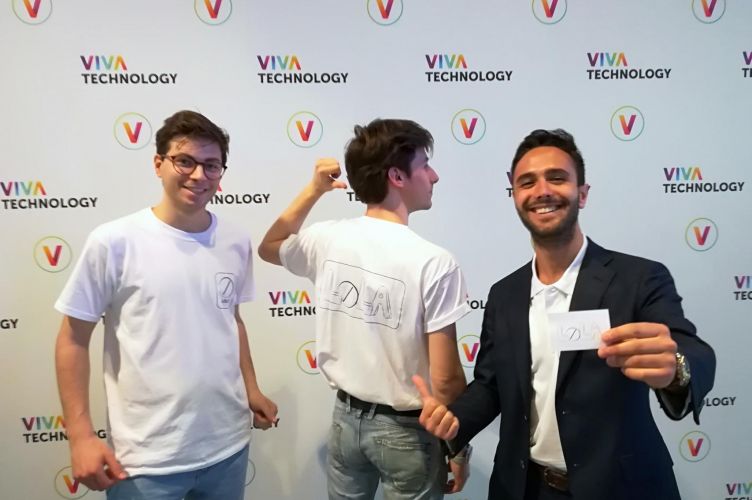Dive with them into their experience!
Meet with Daniel Levis , Marco Bungaro, Giovanni Benassi, Alberto Giordana, and Luca Terragni. They attended from January to April students the IoT specialization (a 120-hour long track created with the support of the IoT Chair). Some of them also attended the option Entrepreurship starting in September with the Jean-Baptiste Say Institute.
You won the Generation IoT contest, how come up the idea to participate in and how did you choose your topic?

During the first semester, while part of us was in the Paris campus and part in the Madrid one, we all received an email from the IoT chair telling us about the Generation IoT challenge since we all were enrolled in the IoT specialization the second semester. During Christmas holidays we called each other in order to understand if we wanted to participate and brainstormed to find an idea that matched the requirements of the contest. We had to propose an IoT-base device with a B2B or B2B2C focus and among the various options that came out we decided to pick the one of a connected pill dispenser for people with chronic diseases.
This final idea came out due to Giovanni’s personal experience, since his grandmother suffers from diabetes and needs to deal with a huge amount of pills every day. Without a support she easily makes mistakes managing them and this is why a smart and connected device able to deliver her the right pills at the right moment would be extremely useful.
What did you enjoy the most and why? What was the most difficult in leading your project?

We know each other since the first years at the Polytechnic, and we already worked together for academic purposes.
This has been a great advantage, not only because we know the strengths of each member of the team, but also since being good friends made the working process fun. We really enjoyed seeing how our project changed from the initial idea we had at the beginning until what we have finally presented to the jury. A process that proceeded smoothly and that was supported by our mentors from the IoT department of Orange, but also by the professors of the IoT specialization that were aware of it and gave us important insights and advices.
The hardest part was understanding which communication technology was the most suitable one for us in order to connect the device to the network, for instance to make it communicate with smartphones.
Furthermore, the mechanical functioning that we are proposing in order to dispense the right pills also is not very obvious and presents some issues, but once solved the device will gain a lot in terms of efficiency for the refilling process of the pills, which is one of our main competitive advantages.
What did you learn from the project's process?
That you need to be the first one to discuss and challenge your solution. Find criticalities and points of failure is hard task to do, but it is even harder to accept that all the work you’ve done needs to be thought again and changed. To achieve this, is of key importance to ask for feedbacks to people that are not fully immersed in the project and can give you a different point of view, seeing and noticing things you don’t.
If we had 3 words to describe your experience, it would be: Exciting, Challenging, Fun!
You got the opportunity to pitch your project at VivaTech? Tell us more about this amazing experience?
Being present as a startup at Viva Technology has been an incredible experience that allowed us to dive into the startup world for three days. The vibes mixed to the confusion that is present during the event gives you such an excitement that you end up in the evening without energies! Of course, we considered it as a big opportunity and we did our best to show how one month after winning the prize we were able to keep working on the project and make further steps.
Have you been to VivaTech before? How did you get prepared to this pitch? What are the next steps?
With part of the prize of the Generation IoT challenge we were able to develop a first prototype to give a concrete idea of our device during the pitch. We also made videos of its functioning and started developing the mobile application to set up and manage it. We are really proud of the work we’ve done so far and the feedbacks that we have received after the pitch allowed us to clarify what are our next steps and how the device needs to be changed.
We are now receiving the support of the I3P, the incubator of the Polytechnic of Turin, and subscribed to another startup competition in Italy. Our main goal is to prepare to this challenge, revising our prototype in order to start real user tests with clients and validate our solution as well as finishing developing the mobile application. With both the prototype and a beta of the mobile application we will test the solution with around 20 users before September and we will go back to pitching for the first seeds to improve it and being able to work full time on it.
We are motivated to make it real!

You can find more information about our solution on www.lolapillbox.com and on our social media pages Facebook, Instagram and LinkedIn.
Campuses
